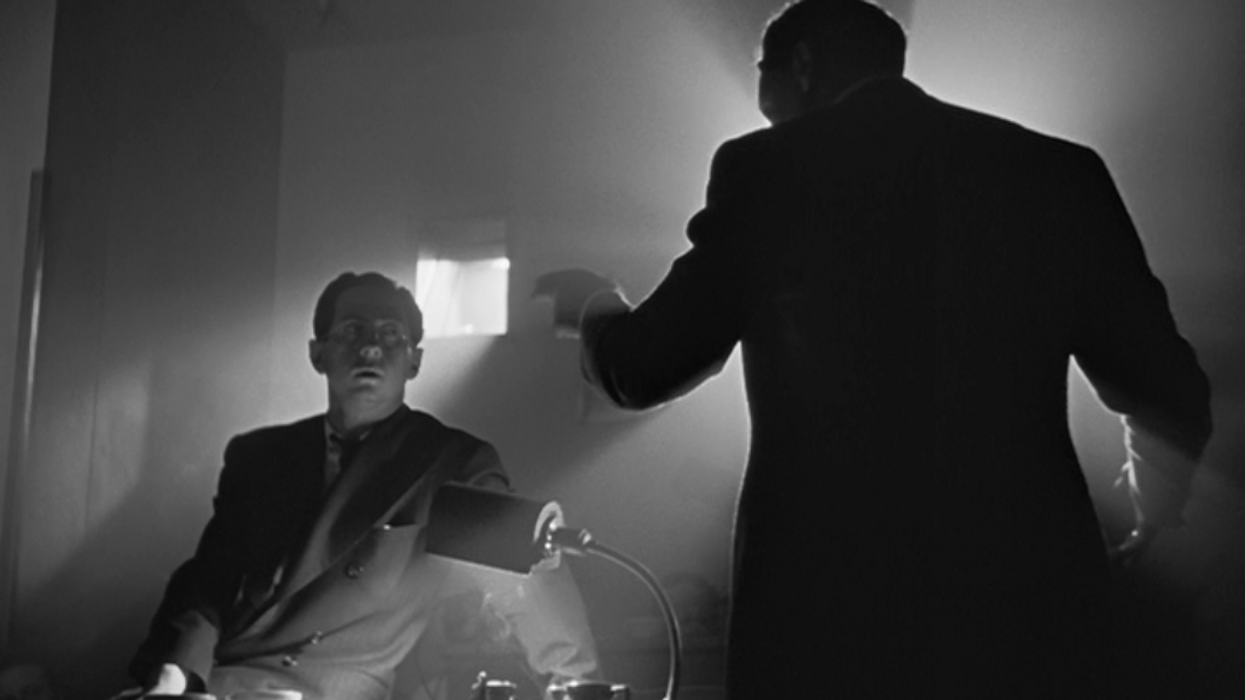Watch: Is Black and White Still Relevant?
This video essay explores the timless beauty of black and white cinema and makes a case for its continued relevance.

For whatever reason, some people just don't like black and white movies. Perhaps, as this essay from RocketJump Film School opines, it's because a younger generation of viewers assumes that these films are going to be "old, unrealistic and boring." However, some contemporary filmmakers—like the makers of festival favorites The Eyes of My Mother, Butterfly Kisses, and GOOK—have chosen to shoot their films in this format.
This essay, while favoring neither color nor black and white, (they're "both a tool," after all) makes the case that monochromatic cinematography can do things that color can't, and watching it just might change some minds. Below are three we learned about black and white cinematography from this video.
1. Black and white pushed film forward
Much of cinema's aesthetic achievements can be traced to the qualities inherent to black and white film itself. German Expressionism, a bleak and psychological genre that flourished in the years after the first World War, "had a huge cultural influence...for its notably abstract sets and high-contrast lightning." This was a huge step toward camera work becoming its own art, as filmmakers realized that "since the images lacked color, our brains naturally picked out shapes within the frame," and by embracing that concept, "the image began to take on a life of its own."
"The image began to take on a life of its own."
The genre influenced American horror films in the '30s, and made its biggest impact on Film Noir, the gritty, existential crime genre that flourished after the second World War. These morally ambiguous stories were perfect for high-contrast cinematography, which was used to express thematic concepts, as well as to tell stories visually. As filmmakers developed "creative ways to create texture, separation, contrast and depth...using light and shadow," it became apparent that black and white was perfect for "visually communicat[ing] the most basic elements of a story." Citizen Kane, the 1940 debut feature from 24-year-old Orson Welles, is still widely considered one of the best films of all time, and it was certainly one of the most innovative, with cinematographer Gregg Toland's deep focus camera work setting a standard that still holds up today.
2. Black and white creates a new reality
Black and white cinematography, by its very nature, presents something that is totally unreal, and, in doing so, creates a new kind of reality—a filmic one. A black and white movie "gives you a view of the world that really doesn't exist in reality," says director Frank Darabont. This is what gives black and white movies their "unique, dreamlike quality." It's perfect for setting a unique atmosphere, an inimitable tone, and capturing characters' interior landscapes, the depths of their psyches, and, sometimes, their descending into madness.
What's more, black and white can set a mood without breaking the bank, which is why historically it was such a favorite of indie filmmakers; Darren Aronofsky's 1998 debut, Pi, deploys its high-contrast cinematography almost like a character.
3. Black and white is counterintuitively lifelike
Black and white cinematography, the predominant idiom of film for most of its history, has much more to offer than its apt depiction of freak-outs. It has been a tool, wielded by artists to create any number of effects. Contrasting the point above, black and white can also be used to make scenes feel more real. In the color film era, directors use black and white in big-budget movies to achieve a certain counterintuitive realism, a documentary quality that recalls historical photographs, as is done inThe Elephant Man, Ed Wood, and Goodnight, and Good Luck. But it's Martin Scorsese who has deployed black and white with the most complete understanding of its possibilities in the modern era, for both realism and surrealist nightmare, in his 1980 masterpiece, Raging Bull:
These are just a few points made by this essay, which should arguably be bookmarked for easy retrieval whenever you find yourself talking to someone who complains that they just "don't get" black and white movies.
Source: RocketJump Film School











